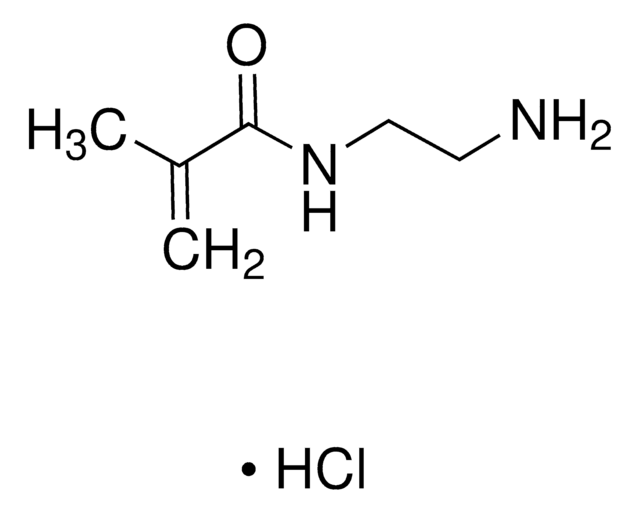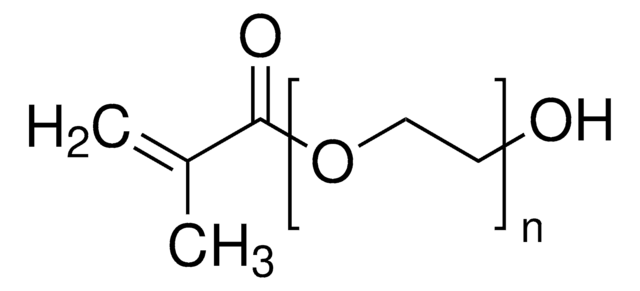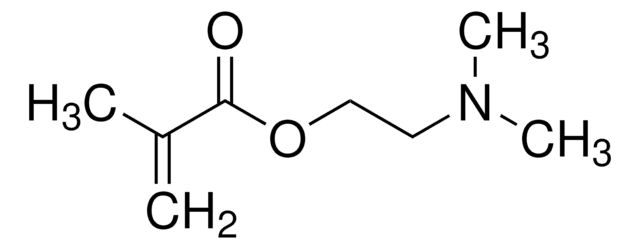907081
Methacrylamide poly(ethylene glycol) amine hydrochloride
average Mn 400, cross-linking reagent polymerization reactions
Synonyme(s) :
Methacrylamide poly(ethylene glycol) amine, PEG amine monomethacrylamide, PEG diamine mono methacrylamide, PEG methacrylamide, PEG monomethacrylamide, Polyethylene glycol
About This Item
Produits recommandés
product name
Methacrylamide poly(ethylene glycol) amine hydrochloride, average Mn 400
Forme
liquid
Poids mol.
average Mn 400 (by NMR)
average Mn 400
Pertinence de la réaction
reagent type: cross-linking reagent
reaction type: Polymerization Reactions
Couleur
pale yellow
Architecture des polymères
shape: linear
functionality: heterobifunctional
Température de stockage
2-8°C
Application
Code de la classe de stockage
10 - Combustible liquids
Classe de danger pour l'eau (WGK)
WGK 3
Point d'éclair (°F)
>230.0 °F
Point d'éclair (°C)
> 110 °C
Faites votre choix parmi les versions les plus récentes :
Certificats d'analyse (COA)
Vous ne trouvez pas la bonne version ?
Si vous avez besoin d'une version particulière, vous pouvez rechercher un certificat spécifique par le numéro de lot.
Déjà en possession de ce produit ?
Retrouvez la documentation relative aux produits que vous avez récemment achetés dans la Bibliothèque de documents.
Notre équipe de scientifiques dispose d'une expérience dans tous les secteurs de la recherche, notamment en sciences de la vie, science des matériaux, synthèse chimique, chromatographie, analyse et dans de nombreux autres domaines..
Contacter notre Service technique

![N-[3-(Dimethylamino)propyl]methacrylamide 99%, contains MEHQ as inhibitor](/deepweb/assets/sigmaaldrich/product/structures/295/145/6b4aae15-7cb5-4b7b-9c06-8e6d24e50951/640/6b4aae15-7cb5-4b7b-9c06-8e6d24e50951.png)


![[2-(Methacryloyloxy)ethyl]trimethylammonium chloride solution 75 wt. % in H2O](/deepweb/assets/sigmaaldrich/product/structures/316/612/66b0f4cf-d060-427d-b4f5-e8fab3e5cffe/640/66b0f4cf-d060-427d-b4f5-e8fab3e5cffe.png)



